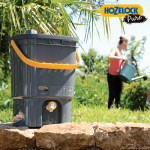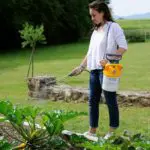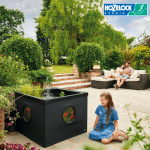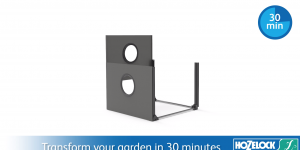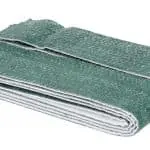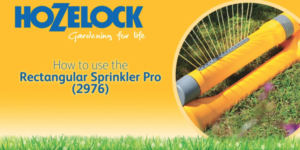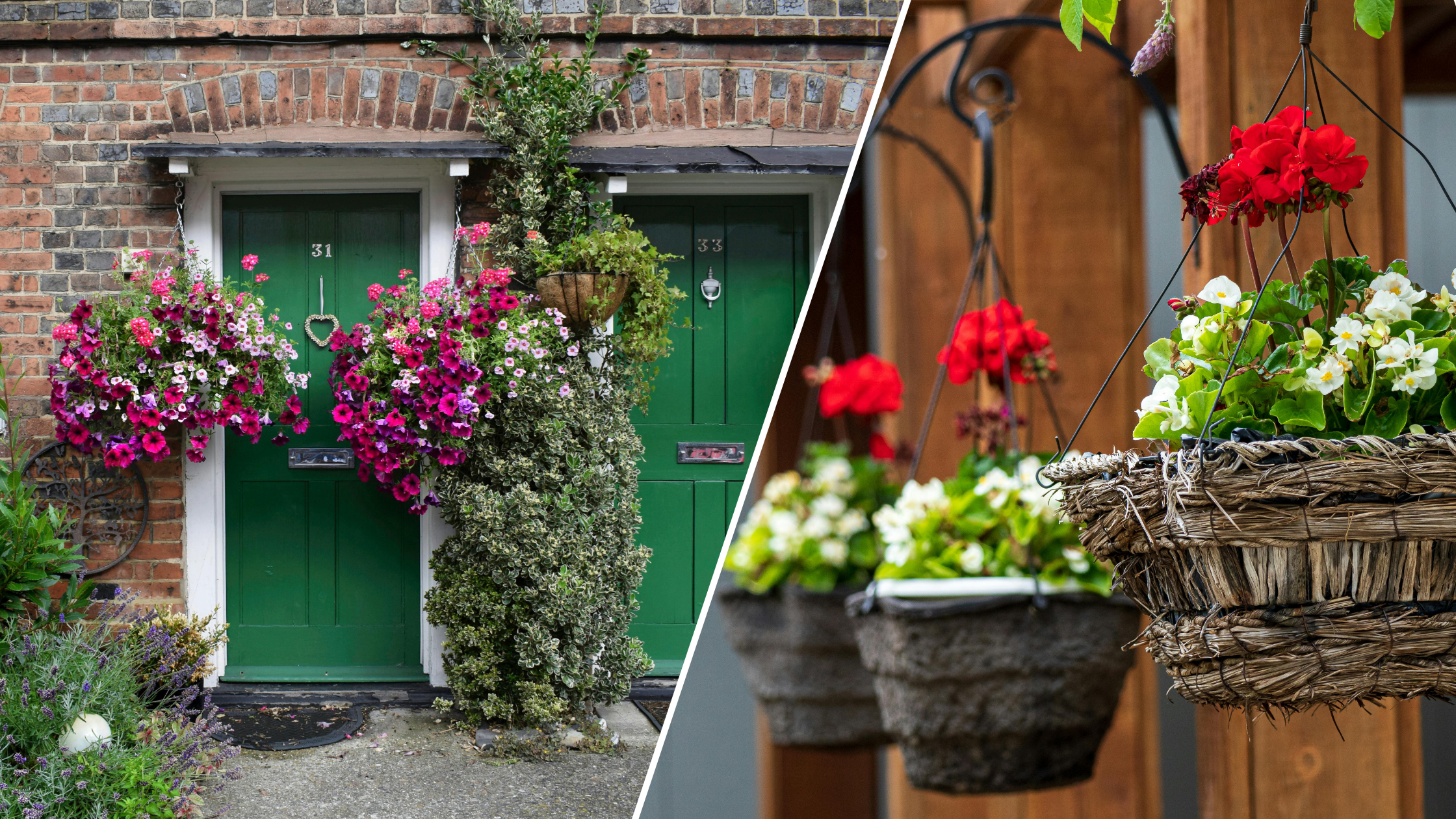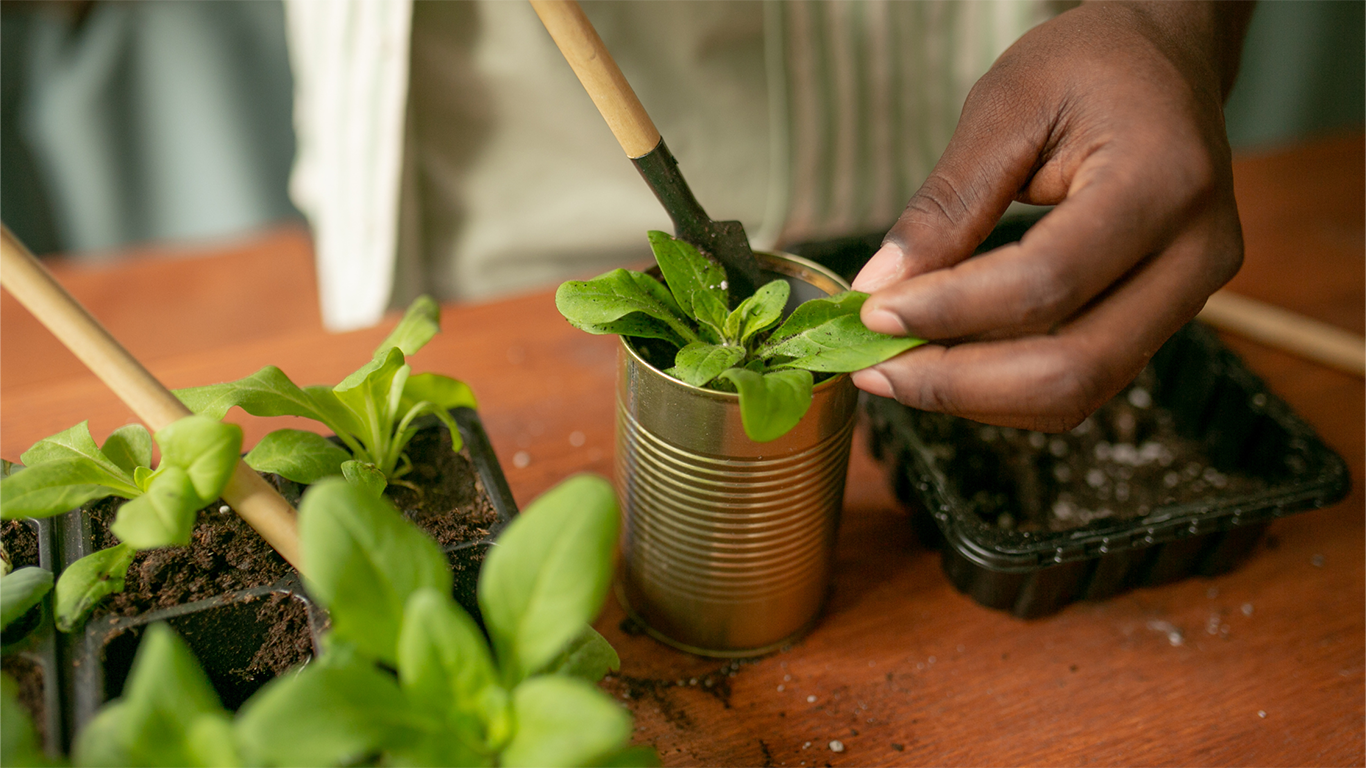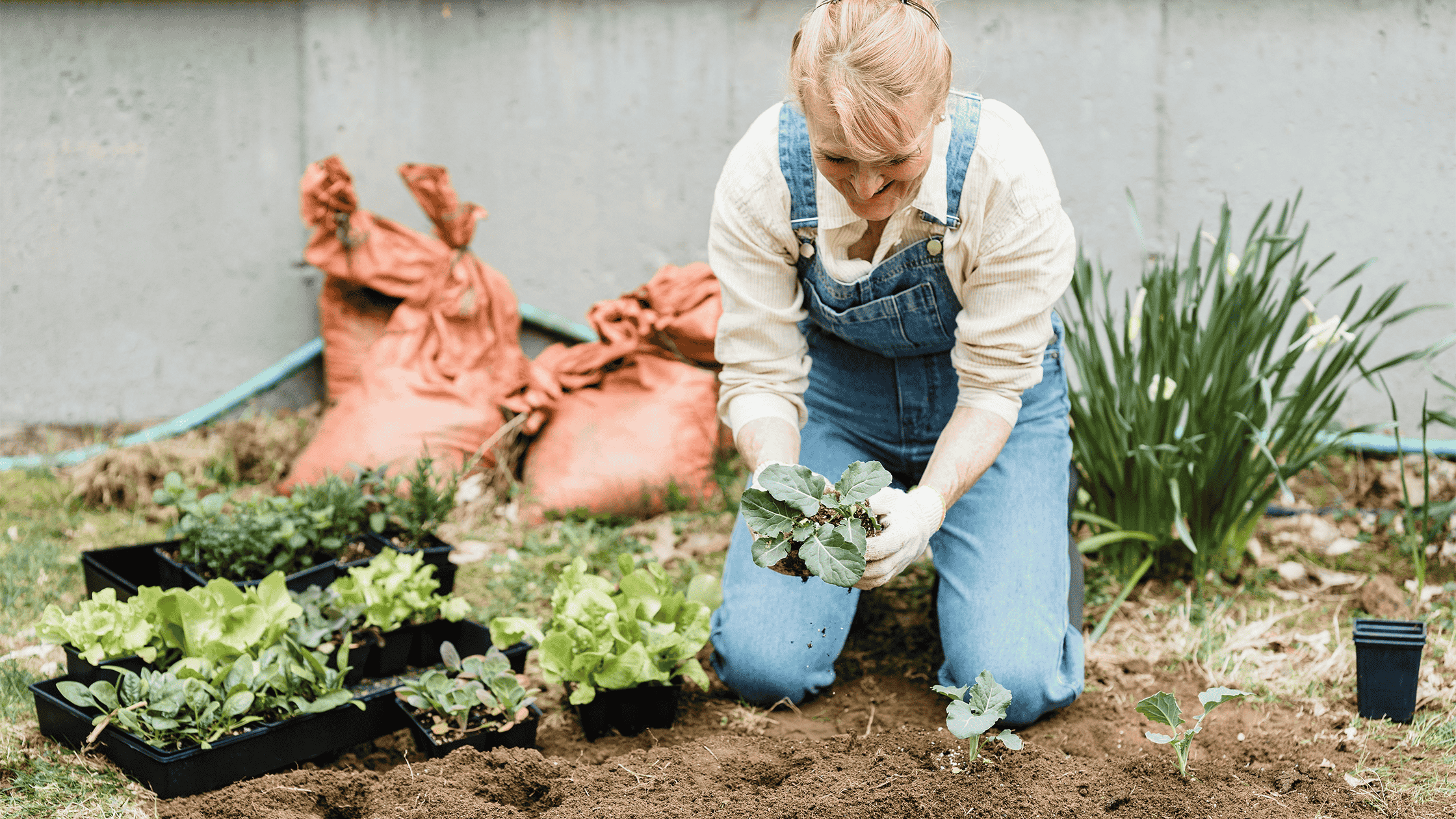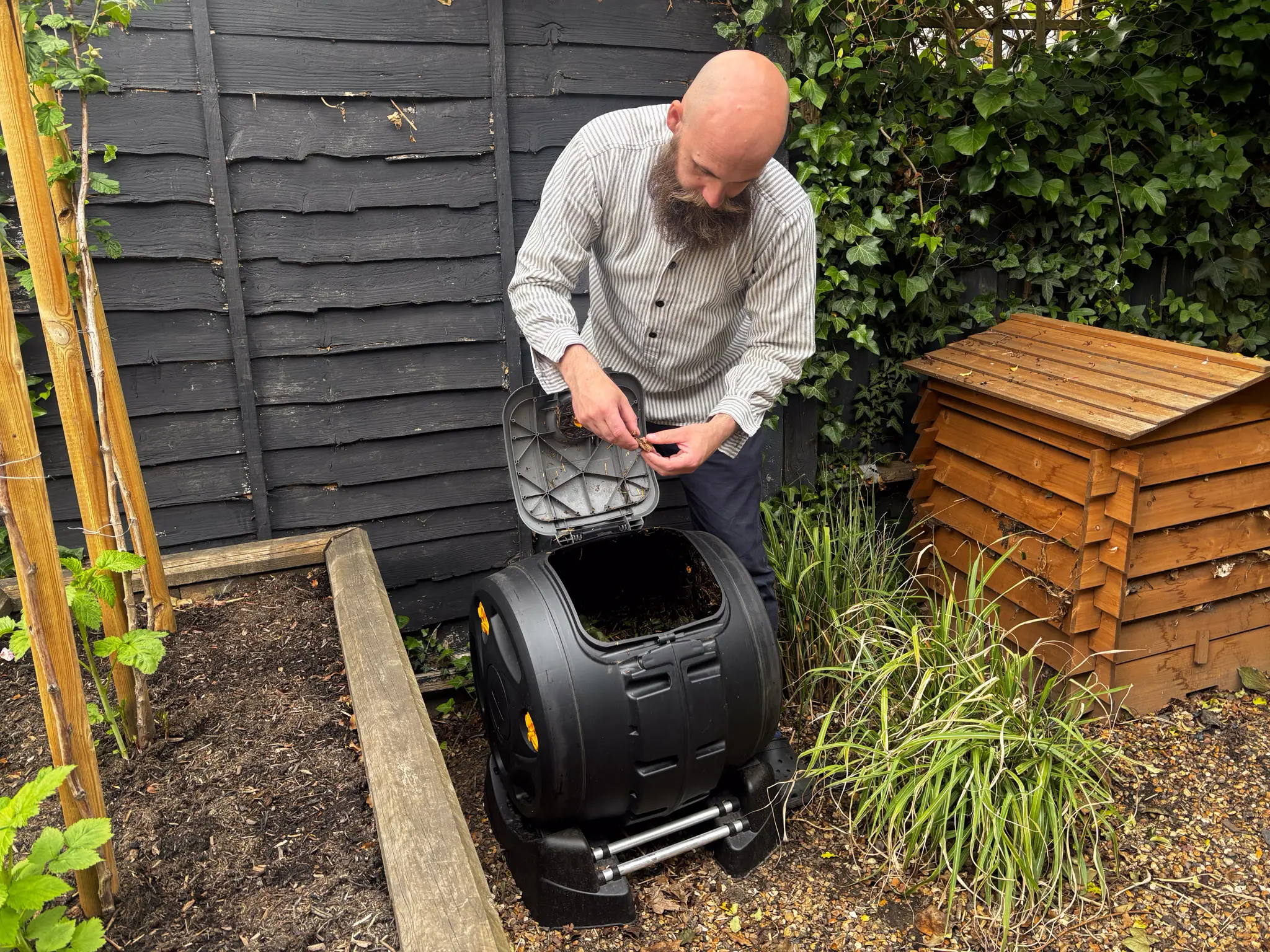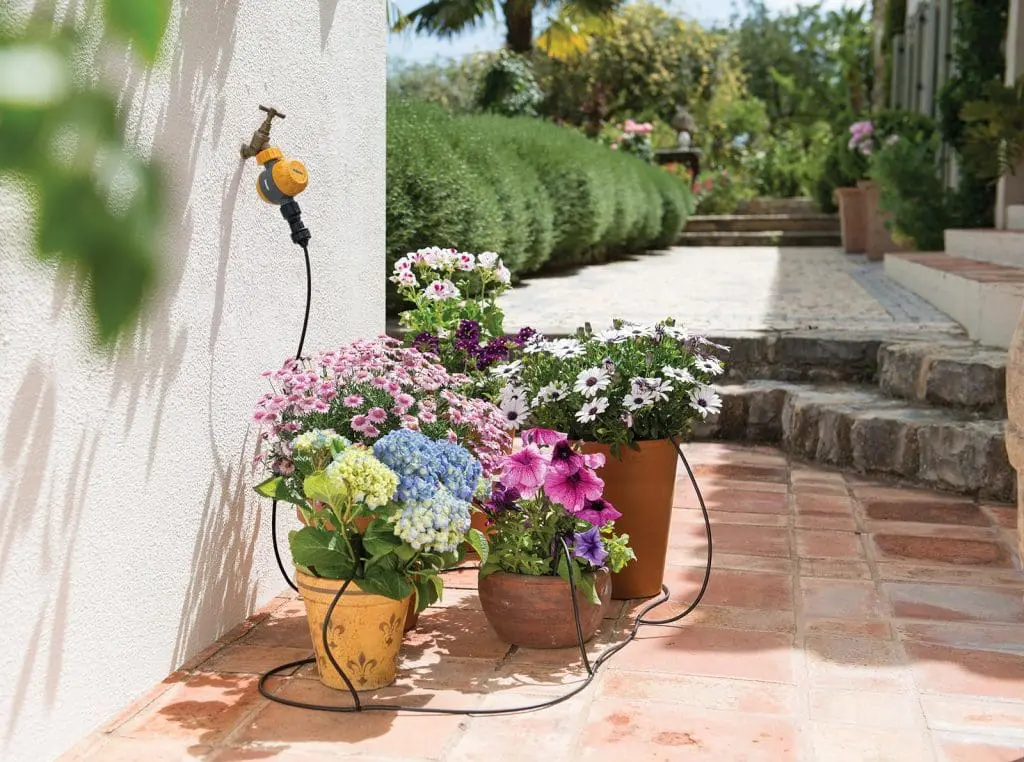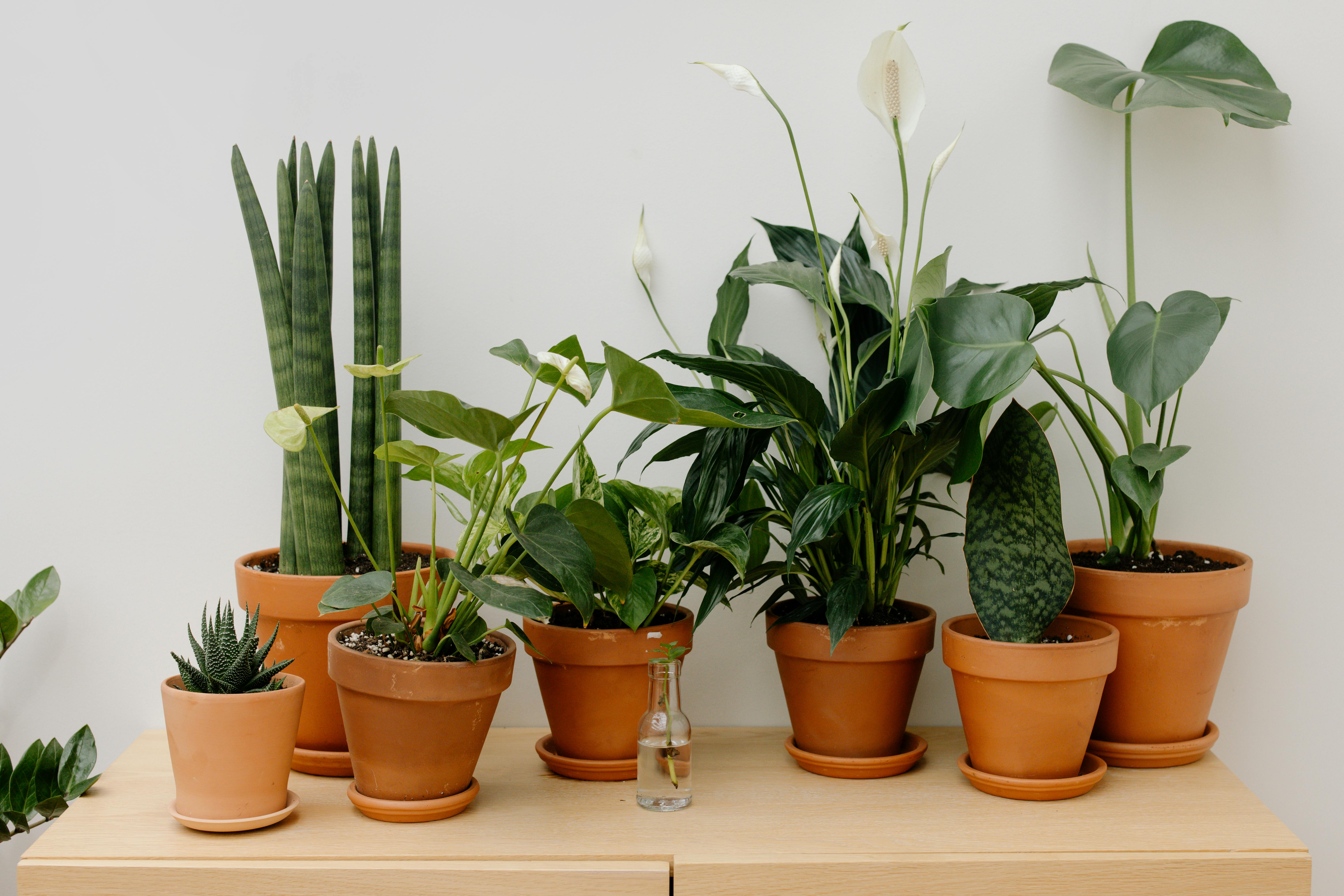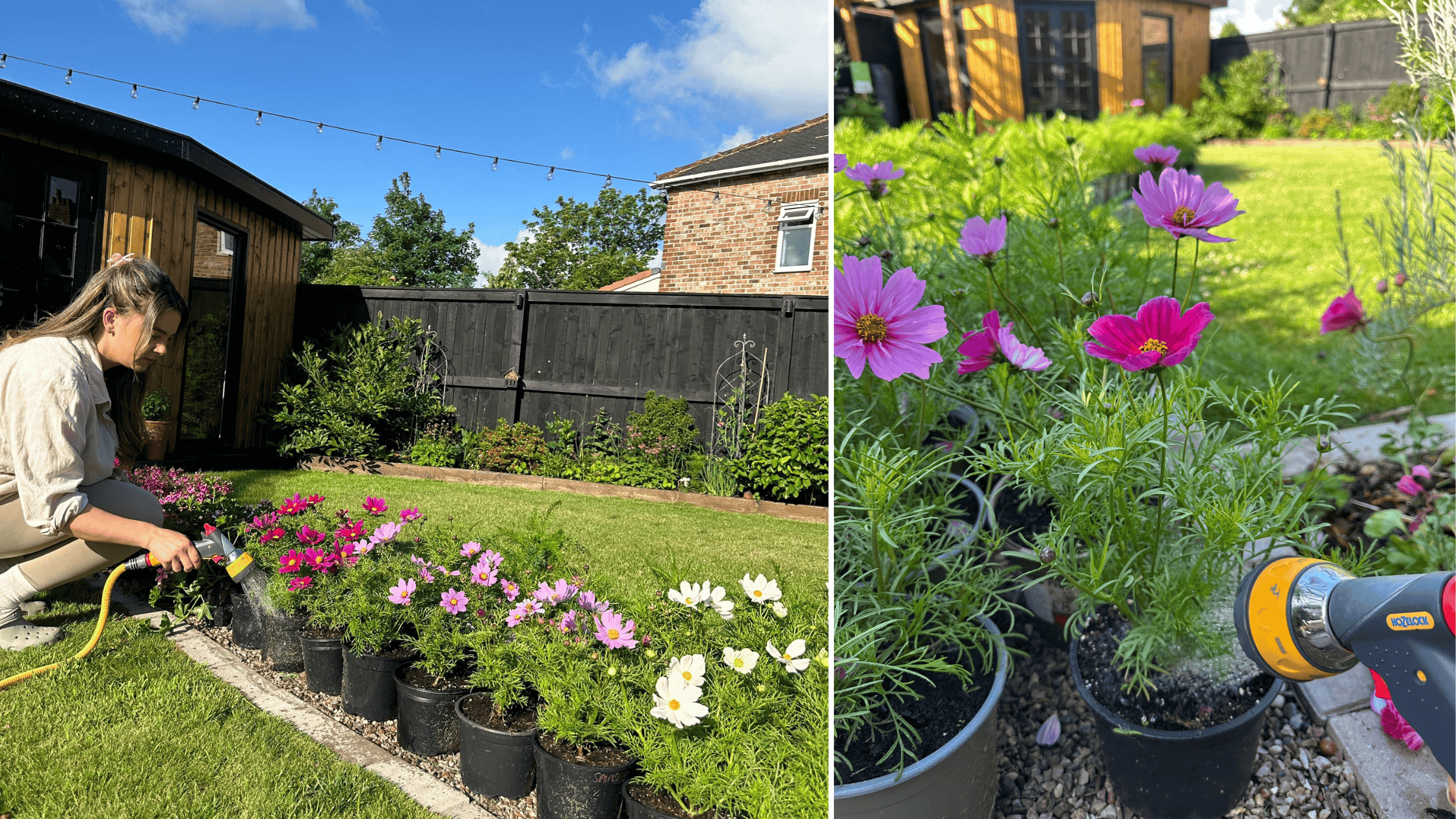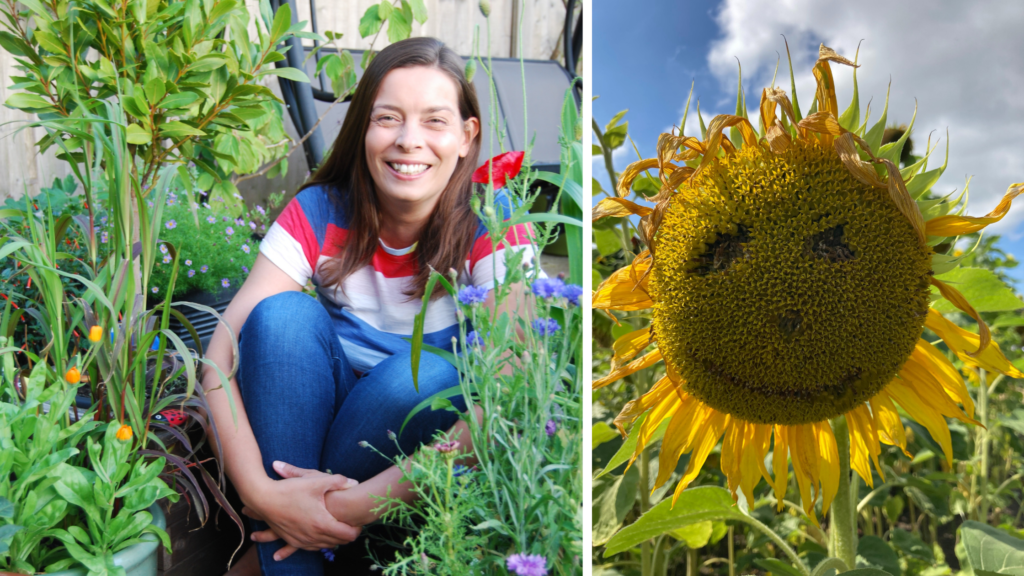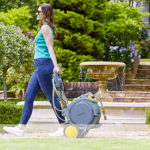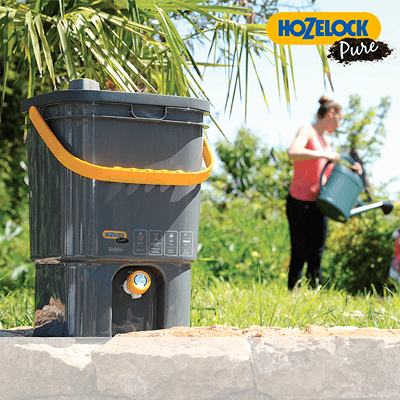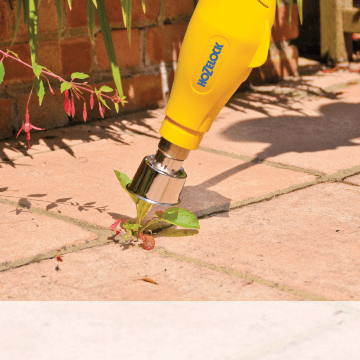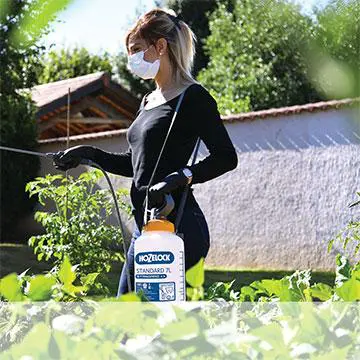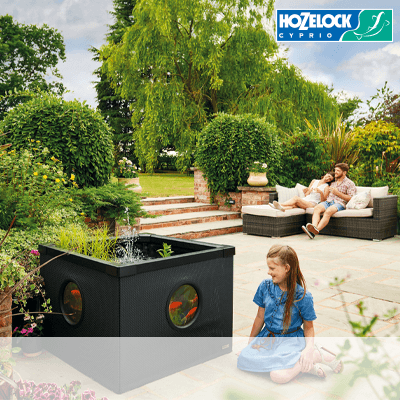There’s just something about a hanging basket that brings a space to life. A well-planted basket adds charm, colour, and vertical interest to even the smallest space.
But while they may look effortless when flourishing, hanging baskets do require a bit of know-how to really shine. The good news? With a few simple techniques, you can enjoy dazzling displays from spring right through to autumn and even beyond if you fancy a winter basket!
Here are six essential tips to help your hanging baskets thrive, no matter the season.
Pick the Right Hanging Basket for the Job
Let’s start at the very beginning: the basket itself. Your choice of container plays a big role in how your plants will perform.

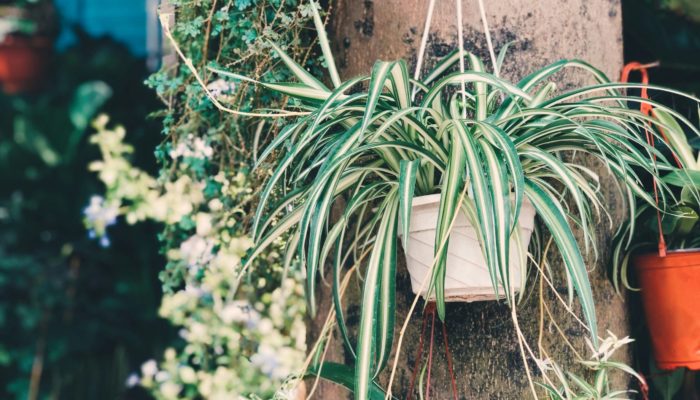
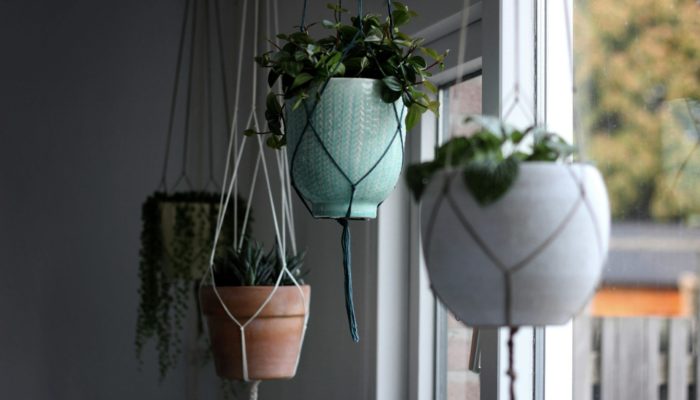
Wire Baskets With Liners (Like Moss or Coir): Traditional and look lovely, especially in cottage-style gardens. They allow excellent drainage and airflow but will dry out more quickly. You can line them with plastic (poked with drainage holes) to retain a bit more moisture if needed.
Plastic and Resin Baskets: More water-retentive and come in a variety of styles, from classic to modern. These are a good option for south-facing spots that get a lot of sun.
Self-Watering Baskets: have a built-in reservoir and are perfect for those who forget to water now and again—or if you’re heading away for a weekend.
Layer Your Plants Like a Pro
Planting in layers not only looks lush, it maximises the use of space. Think of it like building a bouquet that spills in every direction.
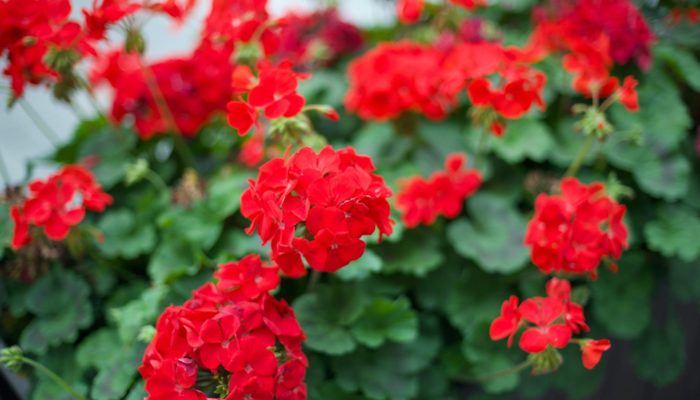
Centre (Thriller)
Choose a tall, eye-catching plant. Geraniums, upright fuchsias, argyranthemums, or ornamental grasses work well.
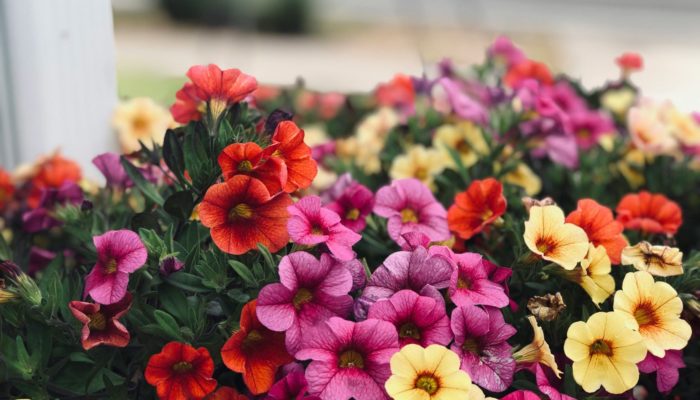
Middle Ring (Filler)
These are your bulk plants that provide colour and coverage. Consider petunias, busy lizzies, begonias, or verbena.
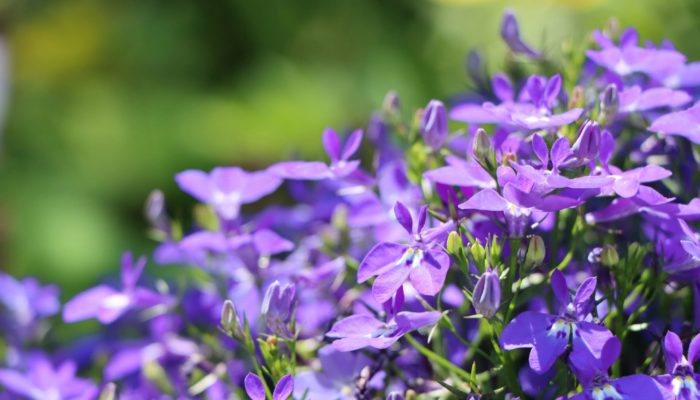
Edges (Spiller)
These cascaders soften the edges and give that dreamy waterfall effect. Trailing lobelia, trailing nepeta, bacopa, ivy, or nasturtiums all do beautifully.
Try sticking to a colour theme for a more striking look, or go for a wild mix if you love a more natural, cottagey style.
Use Quality Compost – And Give It a Boost
The right growing medium is crucial for healthy baskets. Garden soil is too heavy and won’t drain well in containers.
Instead, opt for a peat-free multi-purpose compost, or one labelled specifically for containers and baskets. These mixes are lighter and designed to retain water while still allowing excess to drain away.
To give your plants a head start:
- Add slow-release fertiliser pellets to the compost. These will provide nutrients for several weeks.
- Mix in water-retaining crystals or gel, especially if you’re using wire baskets. These absorb water and release it slowly, helping to keep roots hydrated longer.
Pro Tip: Don’t pack your basket too tightly. Young plants need room to grow and fill out naturally.
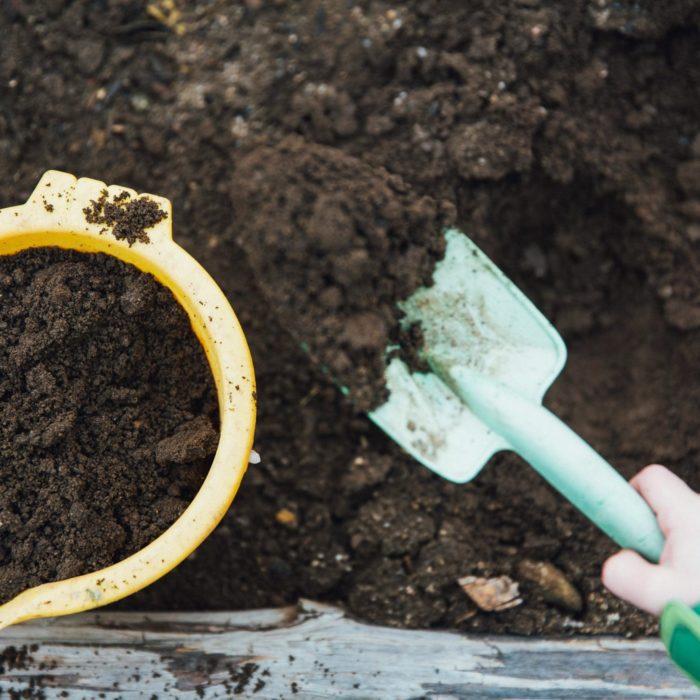
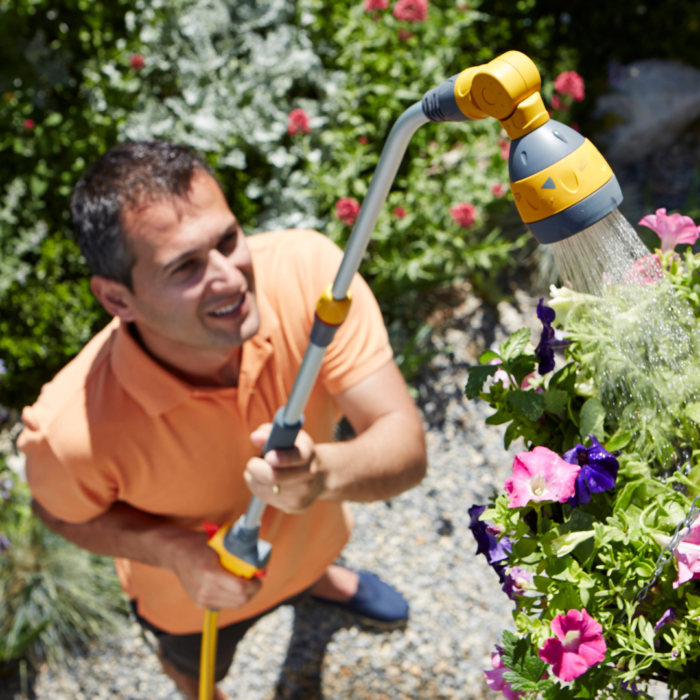
Watering: Little and Often Is the Secret
Watering is arguably the most important job when it comes to hanging baskets. Because they’re exposed to wind and sun from all sides, they lose moisture fast, especially in hot or windy weather.
Some quick rules of thumb:
- In summer, water once a day, and during heat waves, you might need to do it morning and evening.
- Always water thoroughly until you see it run out the bottom.
- Try to water in the cooler parts of the day (early morning or late evening) to reduce evaporation.
- If your basket feels light when you lift it, it likely needs water. A heavy basket equals a well-watered one.
Bonus Tip: Place a saucer or small dish underneath baskets hanging from brackets to catch drips and reduce waste.
Feed to Keep the Colour Coming
Feeding your hanging baskets is vital if you want continuous blooms. Plants in containers quickly use up the nutrients in the compost, especially when they’re producing lots of flowers.
- Use a liquid feed once a week, such as tomato fertiliser or one designed for flowering plants.
- From late spring through to early autumn, this regular feeding schedule will keep your plants full of vigour.
Some gardeners swear by a “little and often” method, halving the recommended dose and feeding twice a week. This can keep things ticking over nicely without overwhelming the roots.
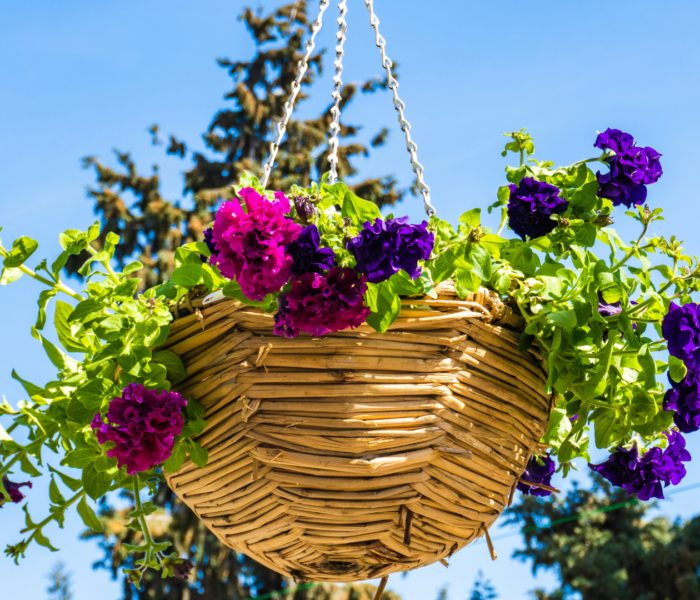
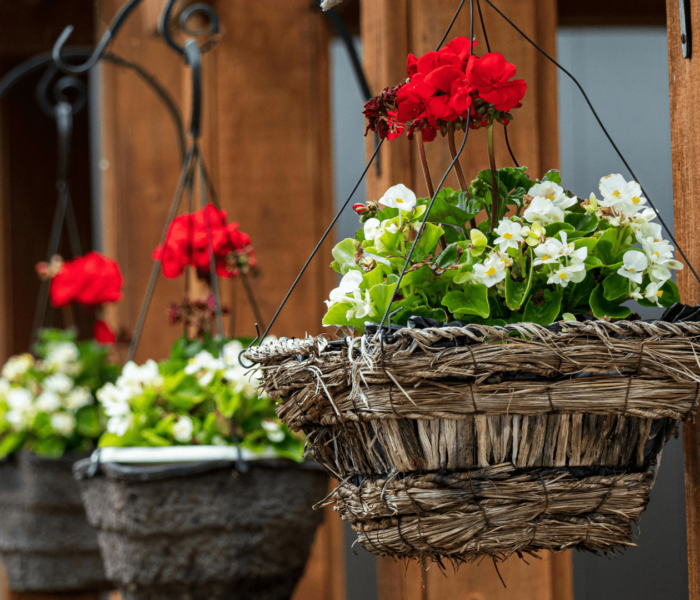
Prune, Deadhead, and Refresh
Finally, don’t neglect a little basket TLC. Keeping your plants neat not only helps them look their best but also encourages new growth and flowering.
- Deadhead Regularly: Remove faded blooms and any developing seed pods. This tells the plant to keep flowering rather than going to seed.
- Pinch Back Leggy Growth: If you notice stems getting spindly or trailing plants getting too long and sparse, give them a trim. They’ll reward you with bushier regrowth.
- Refresh Mid-Season: If your basket starts to look tired by mid-summer, it’s perfectly okay to replace a few plants or top up with fresh compost. Some gardeners even plant a second batch of plugs in July for a late summer boost.
Bonus Tip: Think Beyond Summer
Hanging baskets aren’t just for summer! With a little planning, you can enjoy them in every season:
- Spring baskets with violas, primroses, and bulbs.
- Autumn baskets with hardy cyclamen, pansies, and heucheras.
- Winter baskets with evergreen foliage, small conifers, and pops of colour from winter-flowering heathers or skimmia.
Switching out your basket display with the seasons keeps your outdoor space looking lively year-round.
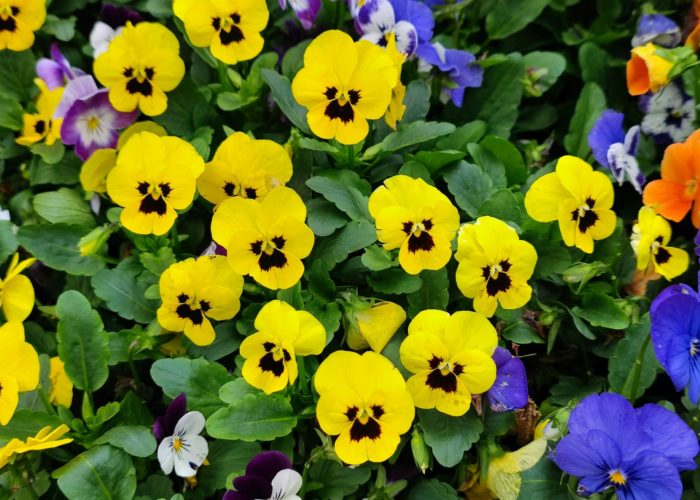
There’s something truly joyful about a blooming hanging basket. It’s like having a bouquet in the sky – bringing colour, fragrance, and a touch of personality to porches, balconies, patios, and pergolas.
Follow these tips and you’ll be on your way to a garden full of gorgeous, gravity-defying displays!
To see more of our top tips, click here!




